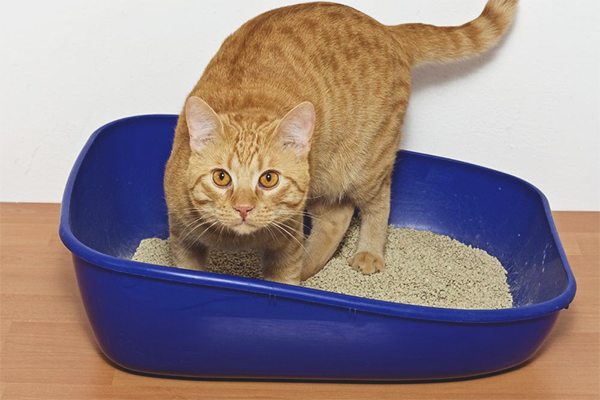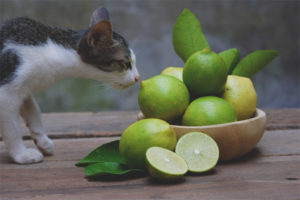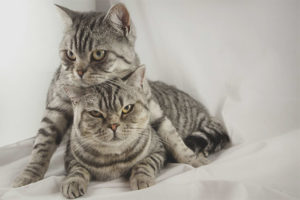The content of the article
From the very first days of living in the house of the animal, we begin to feel love for the cat, we treat the pet with tenderness and special thrill. What can we say about pets who live in the family for many years and became their full members? And when a close friend is in trouble, I want to help and ease his suffering. Pet disease is much more difficult, because, unlike a person, a cat cannot tell about the nature and localization of pain, often we diagnose only presumably based on the behavior of a pet. In this article we will talk about the complexity of urination - what to do if the cat cannot pee, walks in circles at the tray and plaintively pulls. We will try to deal with possible diagnoses, as well as learn how to quickly and safely alleviate the condition of a poor animal.
How to understand that a cat can not go "small"
Caring owners always notice if the cat behaves strangely, not as usual. If the animal has any problems with urination, he walks around the tray, tries on, as if he does not dare pee. Some owners may assume that the cat behaves like this because it is looking for a partner, but this is a misconception. During difficult urination, the animal may painfully meow. Sometimes the animal comes to the tray very often, because it cannot timely and completely empty the bladder. Problems with the urinary system can overtake anywhere - most often the animal does not have time to reach the tray, it can pour out small portions of urine in undated places - do not scold the cat, it is not able to control the painful organ.
Sometimes urine itself can tell about the disease - blood streaks can appear in it, urine can get an unpleasant (possibly, purulent) smell. Sometimes the structure and color of urine changes - it becomes more yellow or brown from the blood in the composition. Sometimes a cat can go directly to the floor near the tray - this is how it shows its discomfort to the host. After a small portion of urine, the cat licks itself,meowing piteously, uncharacteristically pulling back legs. All this suggests a variety of problems in the urination of the animal. It is more difficult for those owners whose pets go to relieve the need on the street, however, the general deterioration of the cat's condition can be seen with the naked eye. The cat can not show its behavior at the place of need correction, therefore, unfortunately, the owner can not guess the problem. Check the suspicion is quite real - you need to probe the lower abdomen of the cat. If you have problems with urination, the stomach will be swollen from the fullness of the bladder, this is especially noticeable in kittens.
What causes urination problems?
Only a doctor can diagnose a cat with an accurate diagnosis, but if all of the above symptoms coincide with the behavior of your pet, most likely he has urolithiasis or a type of cystitis.
Urolithiasis is a fairly common diagnosis in cats, especially in modern cats, which move very little and only feed on dry food. Such food in combination with a small amount of liquid leads to the formation of stones and crystals in the kidneys. Sometimes the stones start moving towards the aisles.It is most dangerous if the duct is blocked with stone - in this case, urine comes from the kidneys, accumulates more and more, and does not find a way out. This condition is very dangerous - it threatens to rupture the bladder and the death of the animal. With this diagnosis, the pain during urination is especially pronounced, but there is usually no blood in the urine. To confirm or refute urolithiasis can a blood test, urine and, of course, an ultrasound.
This is another common problem for cats. Cystitis is an inflammation of the bladder and urinary ducts. When cystitis is characterized by frequent urination in small portions. If the inflammation is serious enough, the swollen urinary canal may increase so much that urine simply cannot pass through it. Cystitis is an insidious disease, it can come back again and again. Cystitis can be bacterial, struvite-induced or idiopathic.
Bacterial cystitis is caused by bacteria - most often staphylococcus and Escherichia coli, which penetrate from a closely located anus. Such cystitis occurs most often, it is usually subject to animals in old age.
Struvitis-induced cystitis is an inflammation of the bladder against the background of thick and crystallized urine. This is the first stage of urolithiasis.
The exact causes of idiopathic cystitis have not been identified, since there is no inflammation according to the blood and urine tests, and no ultrasound sand is detected. It is believed that this type of cystitis can occur against the background of severe stress.
Sometimes, problems with urination can be a problem with the kidneys - if the organ is not functioning properly. Very rarely, but still it happens that the cause of a narrow urethra of an animal can be congenital anomalies. And sometimes it does not manifest itself in childhood, problems may arise already in an adult cat. In this case, any hypothermia usually ends with acute attacks.
What provokes the development of various diseases of the urinary system? As noted, most often - it is the lack of fluid with the constant use of dry food. A large amount of salt in food, excessive consumption of raw fish and meat, a hereditary factor, excess weight - all this can cause problems with urination.And these problems should be solved as soon as possible.
What to do if the cat can not go "small"
Unfortunately, we learn about the disease of an animal already when its condition worsens markedly, and all the signs become apparent. What to do? How to help your friend?
If the cat is suffering and constantly meowing - the animal is in a critical condition, it is necessary to urgently bring the pet to the vet. Moreover, it is urgent - it does not wait for Monday or tomorrow morning, but immediately, because the bladder can burst at any moment, and then death cannot be avoided. In the clinic (some of which work around the clock) the animal will be given diagnostic measures, but the first thing the cat will be given first aid is to insert a special catheter that will help empty the animal's bladder. In no case can not self-medicate, because sometimes it can lead to irreparable consequences. For example, if diuretics are given to an animal when the urinary channel is clogged, the bladder will burst much faster, death cannot be avoided.
Be sure to change the diet of the animal, consult with your doctor about this. Eat more liquid foods, always keep in view a bowl of clean and fresh water to drink. In addition, the doctor may prescribe a special diet that dissolves small grains of salt in the kidneys. Milk, fatty meat and fish (especially raw) are banned for the time being.
In almost all cases (except idiopathic cystitis), the animal will need antibiotics. Sometimes painkillers or anti-inflammatory drugs are prescribed. When a spasm of the muscles of the urinary canal can be given an animal an antispasmodic, however, remember that the hind paws of a cat can refuse the hind legs - this drug is dangerous. It is better to give papaverine in the same dosage.
Already after the blockage of urinary canals is refuted, it is possible to unsolder the cat with decoctions of diuretic herbs - lavender, plantain, dog rose, lingonberry, field horsetail. Very useful for the urinary system of the animal boiled pumpkin and strawberry juice, which is given literally with a pipette. Sometimes ready-made herbal preparations for the urinary system are sold in a pharmacy.
It is very effective to warm the cat's pelvis in warm or hot water, although the animal itself does not tolerate this procedure very well. Put on gloves and lower the pet in half to the container with warm water, you can add hot water as you get used to it. Be careful - you can not immerse the animal in the water below the level of the heart.
In the spring, be sure to include young nettle in the cat's diet - this is an excellent prevention of cystitis.
In veterinary pharmacies there is an excellent drug - KotErvin, which can be used in the treatment and prevention of urolithiasis. It has a diuretic effect, dissolves and removes stones from the body, quickly and effectively relieves inflammation.
Remember that some diseases are chronic, for the maintenance of health treatment should be carried out regularly - about 1-2 times a year.
In order to further avoid relapses, it is necessary to carefully observe the ICD prevention measures. This is an active lifestyle, balanced and proper nutrition, increased immunity and timely access to a doctor.Care for a neutered cat should be more thorough, according to all antiseptic standards. And try not to let the cat lay on drafts and cold floor - this provokes the development of cystitis. Follow these simple rules, and your pet will delight you with good health and good mood!
Video: acute urine retention in a cat











To send